Curious about adding fresh flavors to your winter meals straight from nature? You’re in for a treat as I explore edible winter plants.
I’ll guide you through finding and cultivating American barberries, wild roses, and cranberries. These delicious fruits not only survive the cold but also bring a zing of flavor to your dishes. Plus, I’ll share tips on the delicious, immune-boosting tea you can make from barberries.
Looking for something to spice up your recipes? Wild onions and garlic are the answer. Learn to identify and use these flavorful bulbs, perfect for everything from soups to salads.
Whether you’re a foraging enthusiast or just looking to liven up your garden, this guide is for you. Join me as I explore 15 edible winter plants and discover the fresh, natural flavors waiting for you, right outside your door.
- Related article: Wild Plants That Are Edible
5 Key Takeaways on Edible Winter Plants
- Always ensure you correctly identify the species before harvesting to avoid the danger of poisonous plants.
- Many winter plants, like American Barberry and Wild Rose, offer multiple edible parts. These parts include berries, leaves, and petals that can be used in various recipes like teas, jams, and sauces.
- Edible winter plants are rich in essential nutrients. For instance, American Cranberries and Wild Roses are high in vitamin C, while Common Cattail offers a variety of vitamins and minerals like beta-carotene and potassium.
- Edible winter plants can be found in diverse environments, from urban gardens to wild woodlands. Plants like Barberries and Cranberries thrive well even in city settings, provided they have the right soil and moisture conditions.
- Winter plants can improve your culinary experience with their unique flavors. For example, cranberries are perfect for juices and sauces, while pine needles can be used for tea.
What Are the Winter Plants You Can Eat and Grow?
Always be mindful of poisonous plants’ possible danger, and ensure you correctly identify the species before harvesting.
Let’s dive into the 15 edible winter plants that you can find to eat and grow.
1. American Barberry (Berberis canadensis)
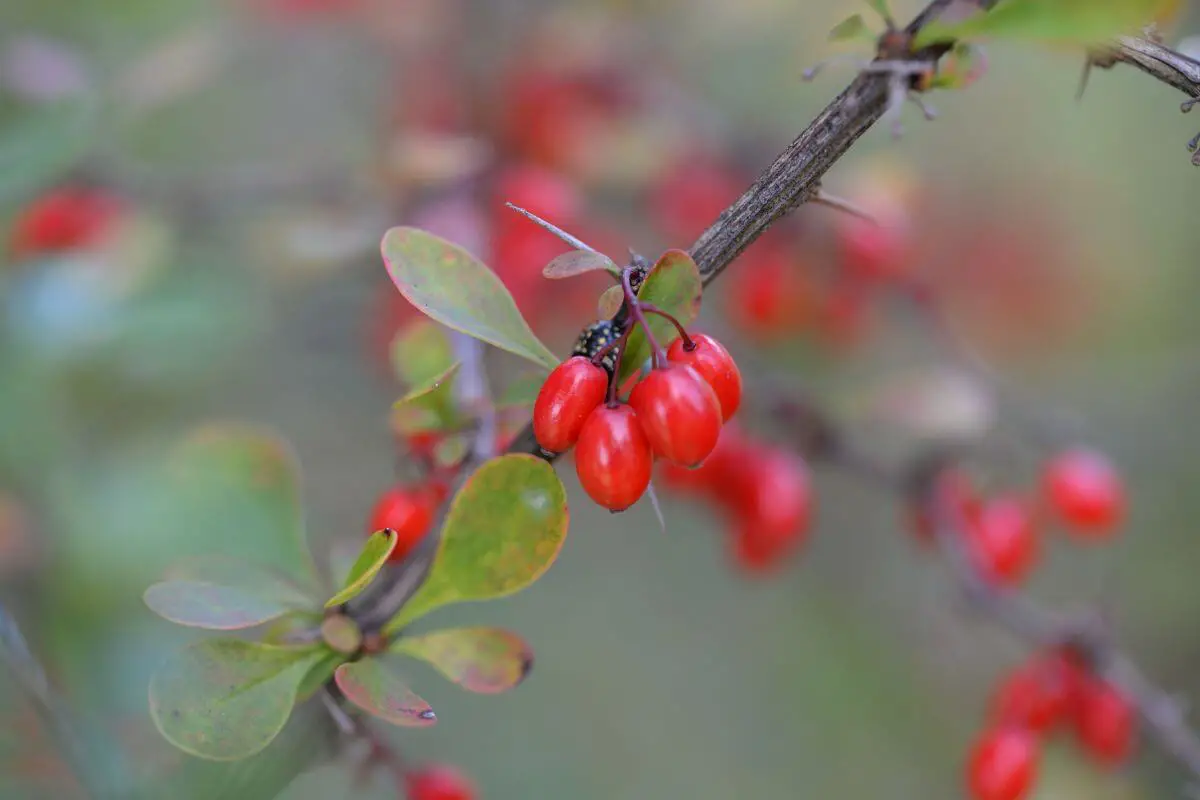
| Location | Nutrients | Interesting Fact |
| Eastern United States | Vitamin C and berberine | Barberry has been traditionally used to create natural dyes. |
Barberries are berries you can eat during winter, found in woodlands and overgrown fields. They can look like wild roses to the inexperienced, mostly because of their red fruits and thorny branches.
They are also easy to grow, even in the city. They adapt well to the urban environment and do well when planted in vases or your winter garden.
The edible part of the barberry plant is the berries, which can be consumed raw or made into jam. They have a fresh, acidic taste and are rich in pectin. The seeds are not edible and should be discarded.
Barberries are beneficial to the immune system. The best way to take advantage of these benefits is to make hot tea.
2. Wild Rose (Rosa species)
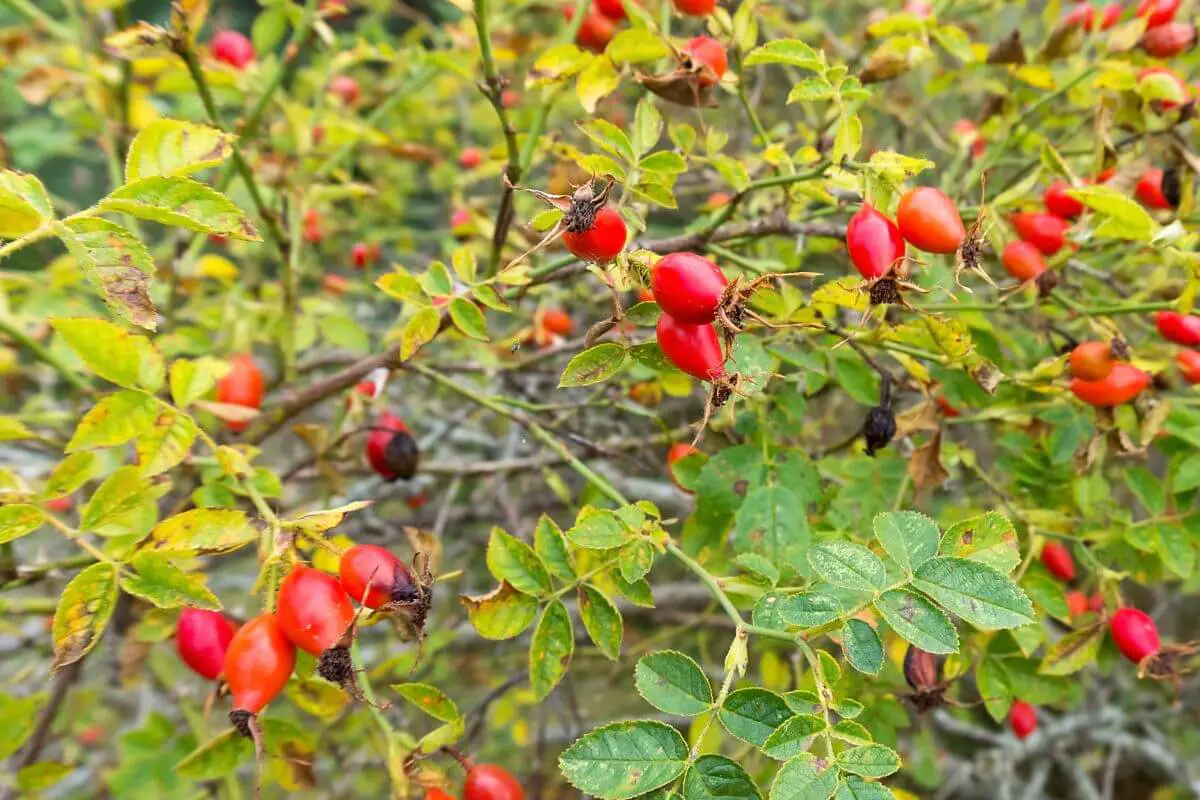
| Location | Nutrients | Interesting Fact |
| United States | Good source of Vitamins C and E, malic acid, and beta-carotene | Rose hips have more Vitamin C than nearly any other fruit or vegetable. |
Wild roses are both native and invasive species. They are woody plants with pinnately compound leaves and fine teeth arranged in a feather-like pattern. The leaves can remain on the plant throughout the winter.
You can look for wild roses in open areas. They are all quite similar. They are bright red and taste sweet, with a hint of tanginess. The petals can also be eaten but are available in the spring.
The easiest way to use rose hips is to steep them to make tea. Otherwise, they must be opened individually to remove the hairy seeds. This can be a long process, but enjoying them in jams and syrups is worth it.
3. American Cranberry (Vaccinium macrocarpon)
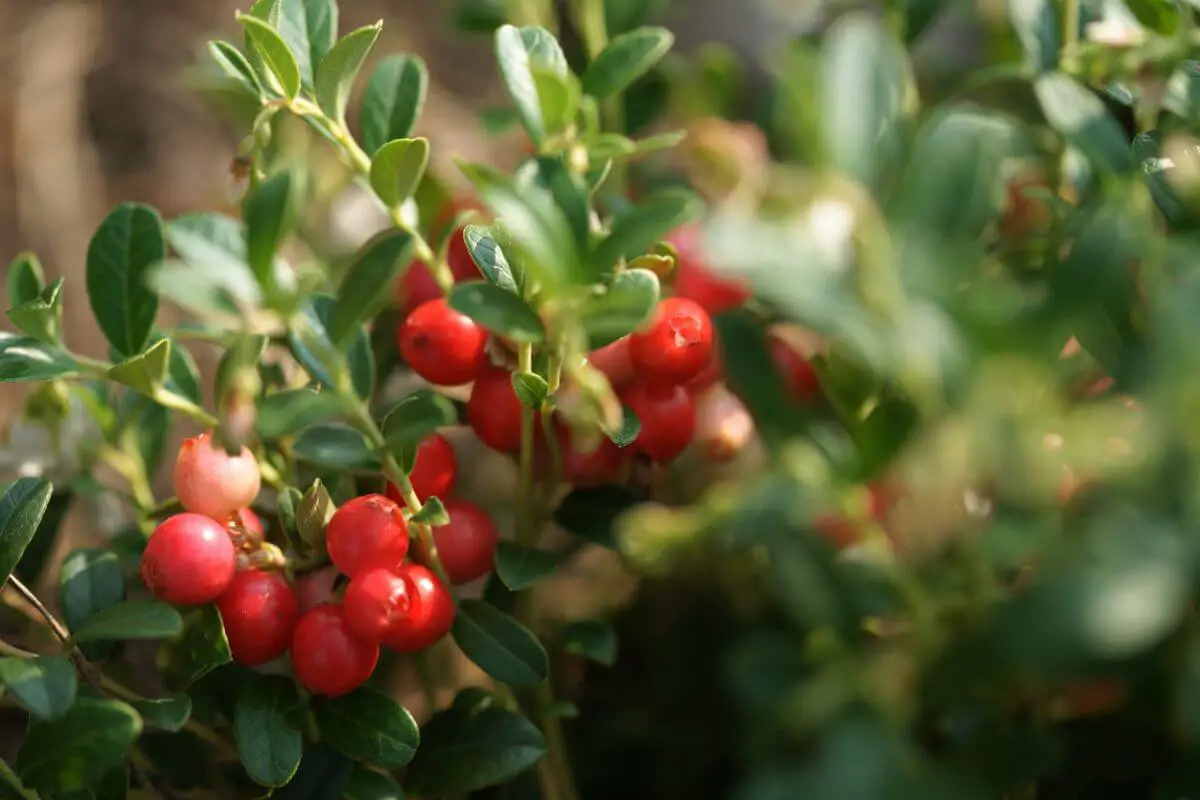
| Location | Nutrients | Interesting Fact |
| Northern States | Antioxidants, vitamin C, and the mineral manganese | The early settlers thought the cranberry blossom looked like the head of a crane, so they called them ‘crane berries.’ |
Cranberries need moist conditions to proliferate, so they grow best in bogs, swamps, and near bodies of water. Cranberry plants can also be grown in a sheltered garden or cold frame in cold weather, but you’ll need moist, acidic soil.
Birds, rabbits, and squirrels love cranberries. You can find these winter fruits until January if they don’t eat them all. Fresh cranberries are best left to wildlife, as they are bitter and tough to chew. But the fresh fruit is great for making juices, and the renowned cranberry sauce is a Thanksgiving classic.
4. Wild Onion and Garlic (Allium species)
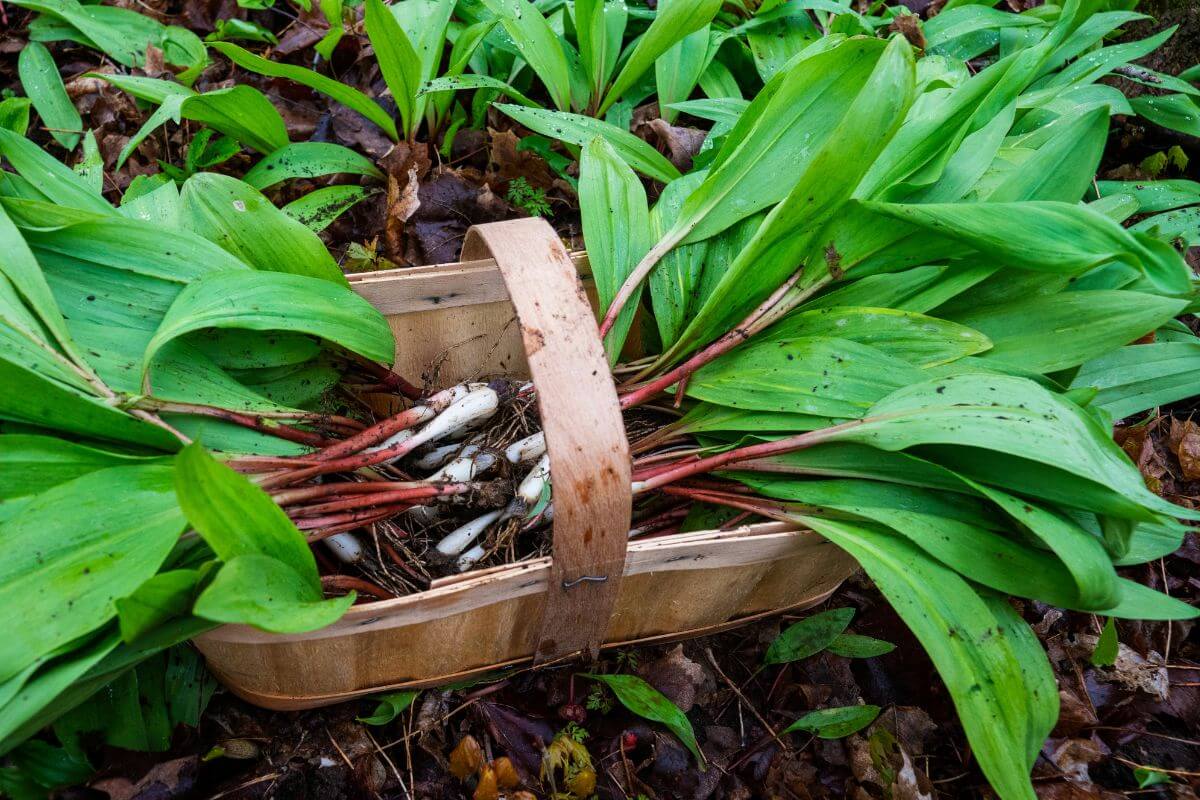
| Location | Nutrients | Interesting Fact |
| North America | Natural antibiotics rich in vitamins and minerals | Onions and garlic are related to lilies. |
Wild onion and garlic are very common in open areas during winter. They are both herbaceous plants with rounded stems and underground bulbs.
The easiest way to recognize them is by their signature smell, similar to that of cultivated species. If you find similar plants that don’t smell like garlic or onion, do not harvest them, as many species from the lily family are toxic.
Wild onions and garlic’s green leaves and bulbs can be eaten raw or cooked. They are pleasantly spicy but milder than cultivated onions and garlic. They are perfect for seasoning meat, fish, stir-fries, and salads.
5. Common Cattail (Typha latifolia)
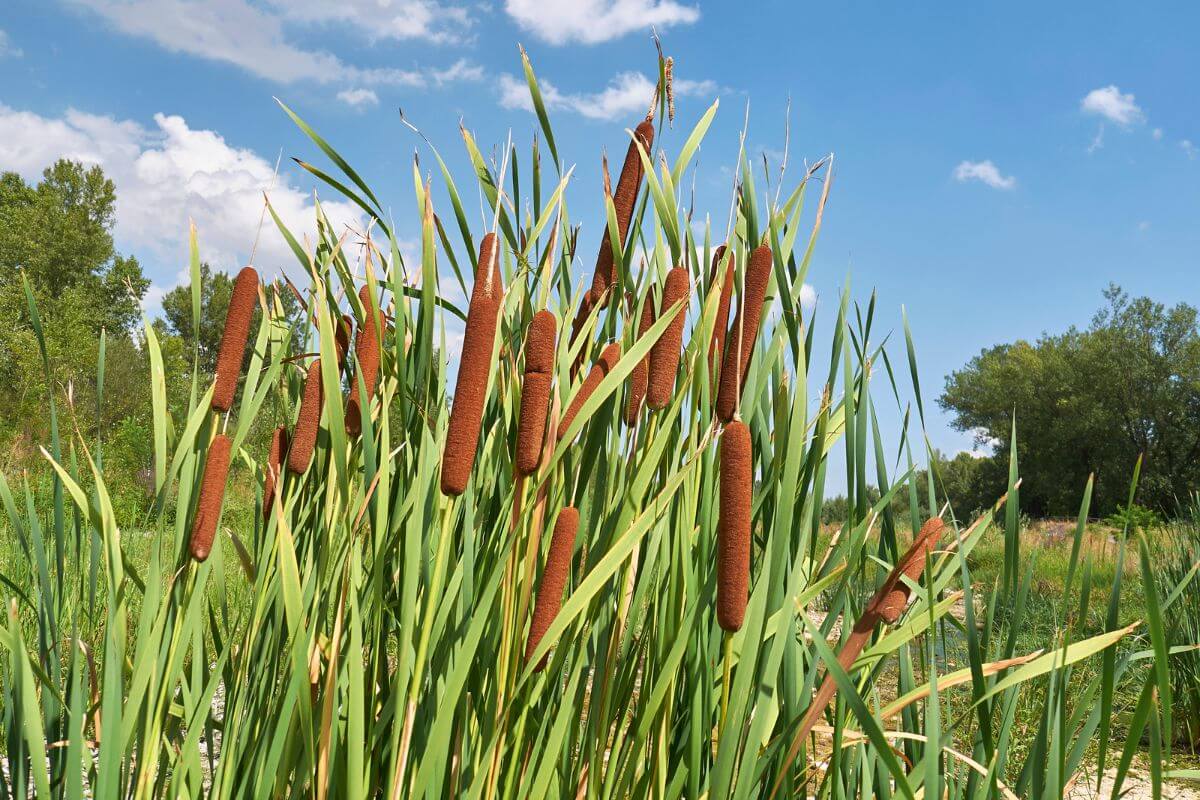
| Location | Nutrients | Interesting Fact |
| Alaska, Canada, and the northern United States | Beta carotene, niacin, riboflavin, thiamin, potassium, phosphorus, and vitamin C | The fluff from cattail plants can be used as a firestarter. |
Common cattails are plants that grow near water, so you should look for them near swamps and other freshwater sources. The cattail is the largest species, forming recognizable brown fluffy seed heads. Similar species might be poisonous but don’t have these seed heads.
Cattails must be harvested before the wet ground has frozen because they must be dug up. You might find some young sprouts growing near the older plants. These are very tasty and can be eaten boiled or fried.
During the winter, the only edible part of the cattail is the rootstock, which has a soft interior. The inside of the rootstocks can be scraped out and is rich in starch. It can be dried or used fresh in soups and stews.
6. American Persimmon (Diospyros virginiana)
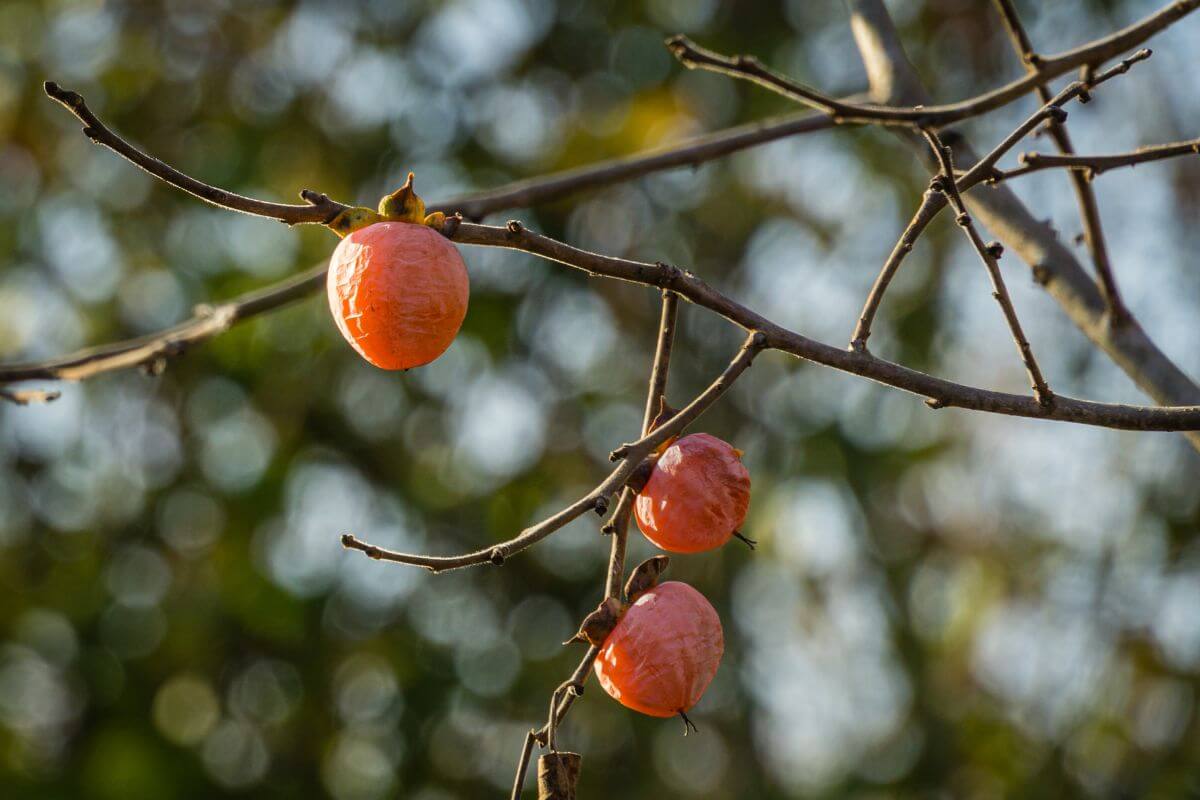
| Location | Nutrients | Interesting Fact |
| Eastern United States | Vitamin C | The American persimmon belongs to the ebony family. Its wood has been used to make golf clubs, shutters, and furniture. |
The persimmon fruit can be harvested from late fall until the end of January. You’ll know they are ripe when they look soft and wrinkled. Do not pick them before they look rough and gooey, as they are very bitter (astringent) when not ready.
American persimmon can be easily grown, but it might start bearing fruits only after 10 years. These orange fruits are resistant to frost and grow on deciduous, moderate-sized trees.
Persimmons can be eaten raw or turned into jam. They also ferment well so that you can make persimmon wine or liquor. They may be the sweetest fruit that can be harvested in winter and year-round. It’s not surprising, then, that the scientific name of this plant means “food of the gods.”
Here’s a great video explaining how to eat Persimmon:
7. Pine (Pinus species)
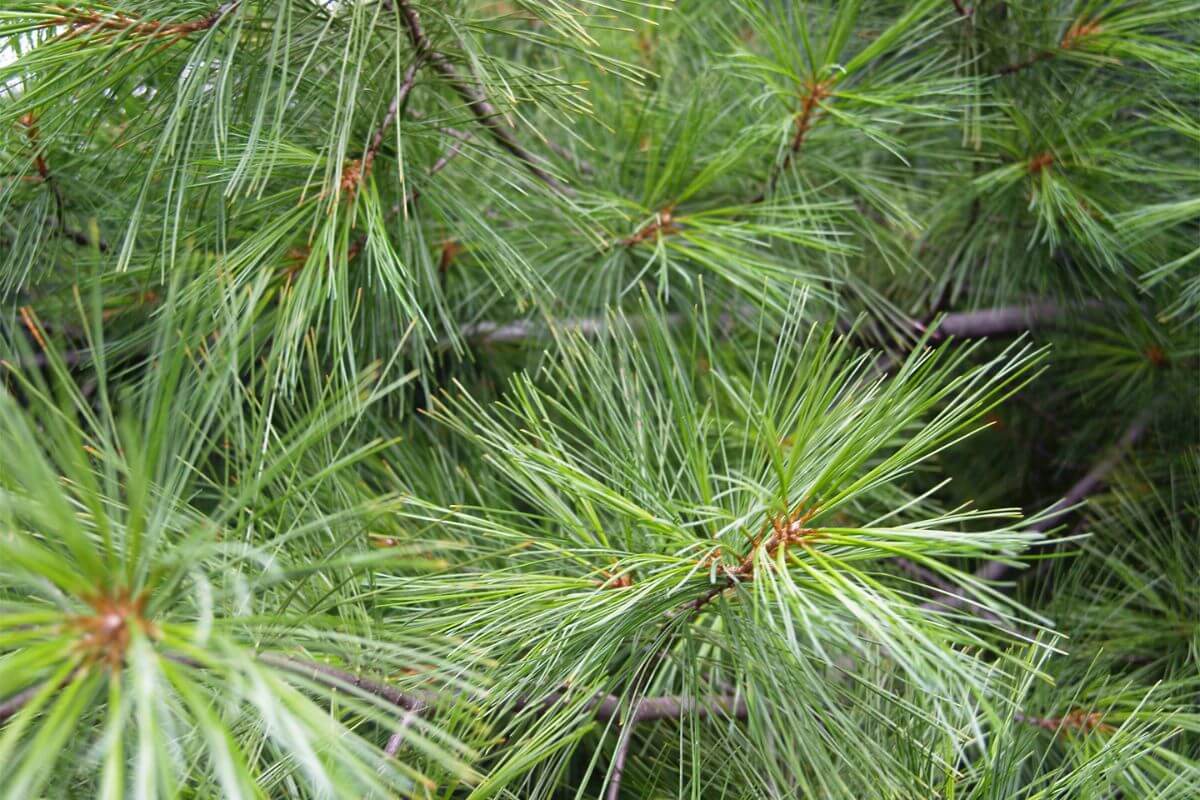
| Location | Nutrients | Interesting Fact |
| United States | Vitamin C | Pine trees typically live for 1,000 years or more under good conditions. |
Pine trees are some of the most common edible conifers, but you could also try spruce, fir, and redwood. The only ones to avoid are the yew tree, the loblolly pine needles, and the ponderosa pine needles, which might be toxic.
There are many species of pine throughout the Northern Hemisphere. Like most conifer trees, pines are evergreen and easy to find in woods and mountains. You’ll recognize them because their needles grow in clumps of 2 to 5.
Pine trees’ edible parts are the needles, bark, and cones. Here are some of what you can make from them:
- Pine Needle Tea – Pine needles make a great tea and are an excellent base for aromatic liquors. However, the green needles should not be boiled, as they will become bitter. The heat can also remove vitamin C and its medicinal properties.
- Pine Bark Flour – The lighter bark next to the wood can be shaved, dried, and ground into highly nutritious flour. Older trees also bear cones, sometimes containing small, nutritious nuts.
8. Chickweed (Stellaria media)
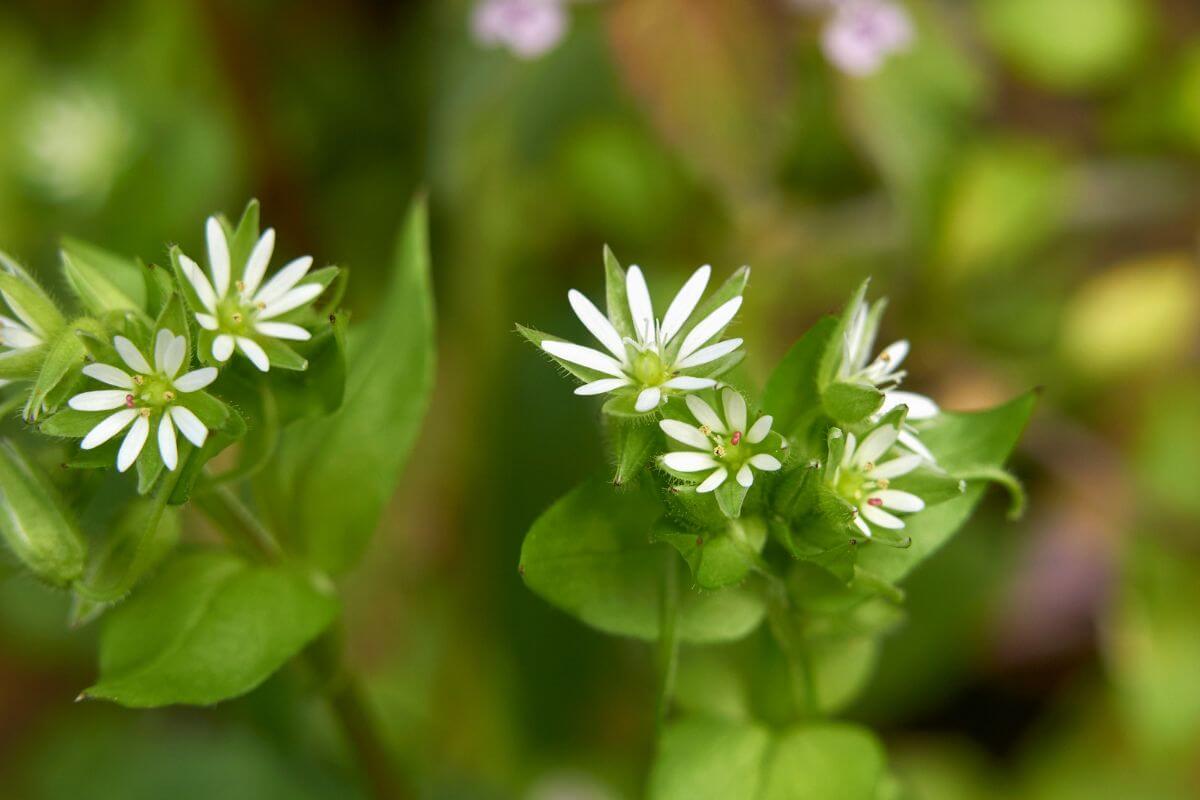
| Location | Nutrients | Interesting Fact |
| Europe, United States | Antioxidants, vitamins A and C, calcium, magnesium, iron, zinc | A single chickweed plant can produce between 2,500 and 15,000 seeds. These seeds can remain viable for over a decade. |
Chickweed is one of the few tender winter greens that grow in the wild. It’s a creeping plant with white flowers that can be found growing in protected areas of lawns and gardens.
Chickweed has a milder taste and is perfect for salads and soups. It’s so tender that you can also eat the stems. The young leaves and stems of chickweed can be eaten raw or cooked. Chickweed can also be used as a poultice to relieve itchy skin or eaten to ease constipation.
Other Stellaria species are edible, but they sometimes have hairy leaves, which are not pleasant to eat. Some aren’t bad when eaten cooked, such as the star chickweed (Stellaria pubera) and the mouse-ear chickweed (Cerastium vulgatum).
9. Mullein (Verbascum thapsus)
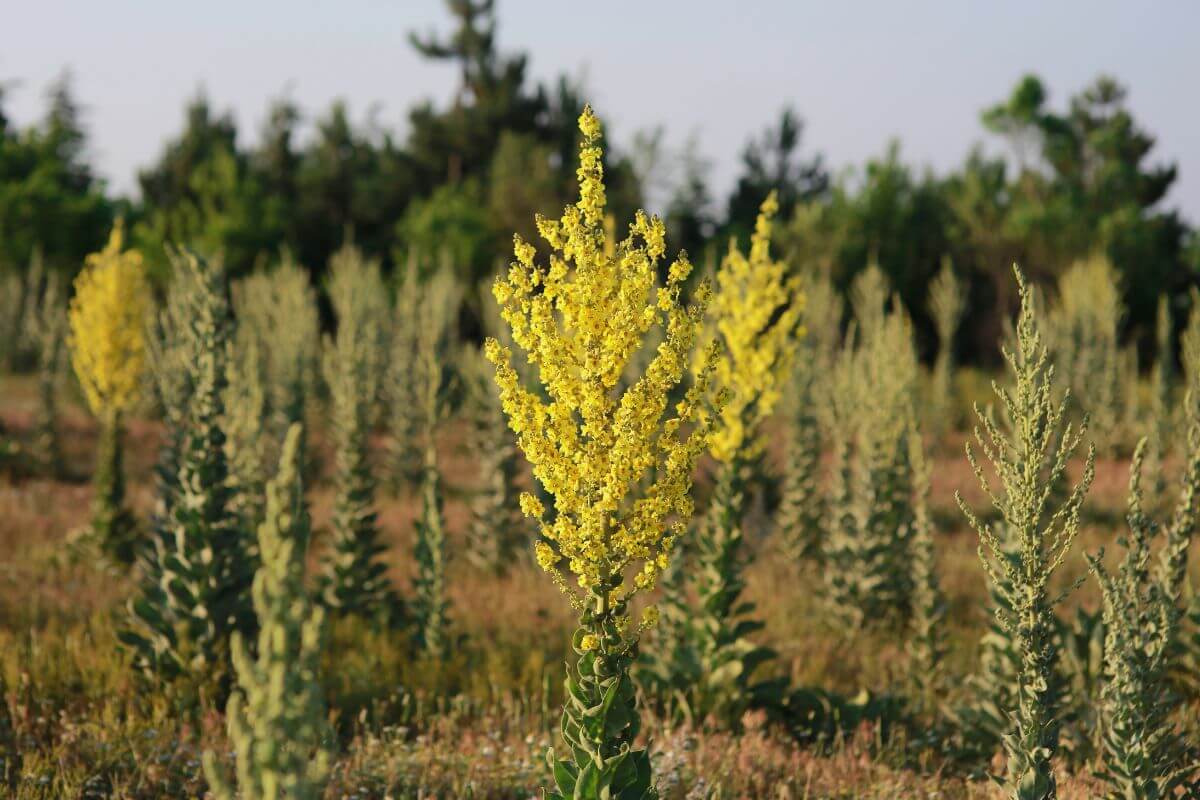
| Location | Nutrients | Interesting Fact |
| United States | Flavonoids, phenylethanoid glycosides, and iridoids | Mullein has large, fuzzy leaves sometimes used as emergency roadside toilet paper. |
Mullein is a biennial plant that grows on dry soil. This plant thrives in full sun, so look for it in open areas.
Mullein leaves are mainly used for tea, but Native Americans also dried and smoked them. You can copy them by mixing mullein leaves with tobacco or making a nicotine-free blend with other wild or cultivated greens. Mullein has antioxidant and anti-inflammatory properties.
Mugwort, coltsfoot, skullcap, sage, and mint are just a few examples of plants that are safe to smoke, but there are many more.
10. Hickory (Carya species)
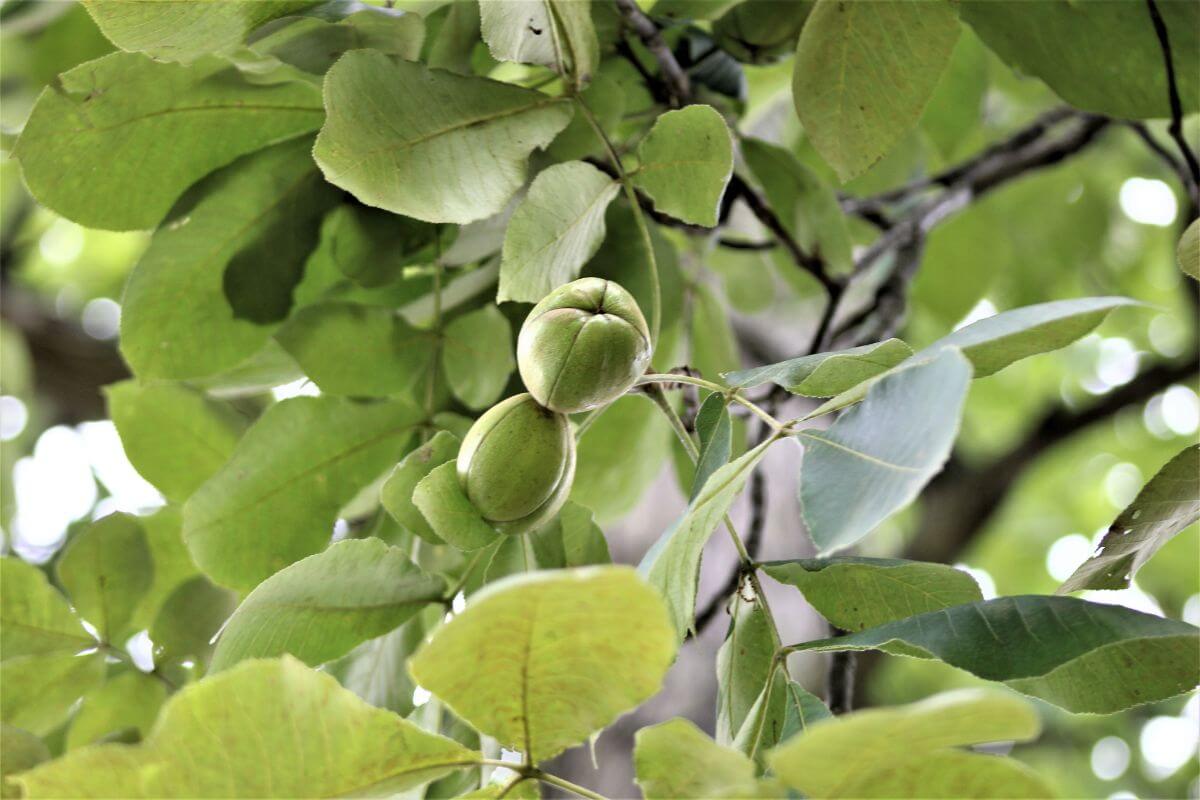
| Location | Nutrients | Interesting Fact |
| United States, Canada, Mexico, Asia | Healthy fat, carbohydrates, and protein | Hickory flowers have no petals. They grow in spikes or in long, thin clusters called catkins. |
Hickory trees are hardwood trees closely related to pecans grown further south. Its nuts have an outer husk that can be peeled off and hides an inner shell.
A similar nut is the buckeye, which is poisonous. To ensure you have the right kind, check if the inner nutshell is divided into chambers, like a walnut. If it’s whole like an almond, it’s a buckeye nut, and you should discard it.
Hickory nuts taste sweet and are similar to pecans. Like all nuts, they are packed with fats, making them high-calorie. They can be eaten raw and make an amazing trail snack to replenish your energy on long hikes quickly.
A few hickory species have extremely bitter nuts but aren’t dangerous to eat. The advice is to always taste one before taking the time to harvest a large amount.
11. White Oak (Quercus alba)
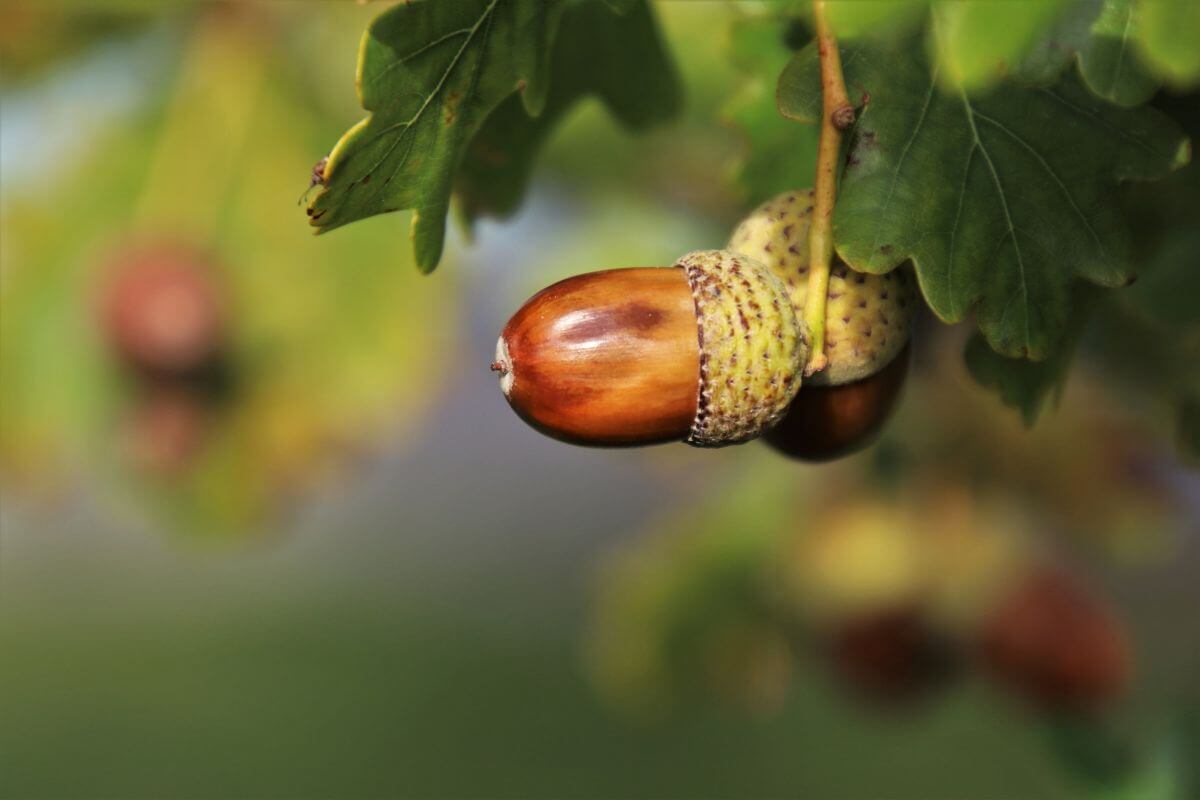
| Location | Nutrients | Interesting Fact |
| United States | Vitamins A and E and beneficial antioxidants | A large oak tree can produce over 10,000 acorns during its mast year. |
The fruit of oak trees is the acorn, the edible part of the plant. Acorns grow into a cup shape. The best-tasting acorns are those of the white oak, which can be recognized by its leaves with round lobes. The others are also edible, but they can be very bitter.
The taste of acorns improves after they’ve been soaked in warm water multiple times. To do this:
- Divide them into smaller pieces and submerge them in water for about one hour.
- Then drain, rinse, and repeat until the bitterness is gone.
The process can take a while, but it’s necessary to make them more palatable and remove tannic acid, which can cause nausea if ingested.
12. Black Walnut (Juglans nigra)
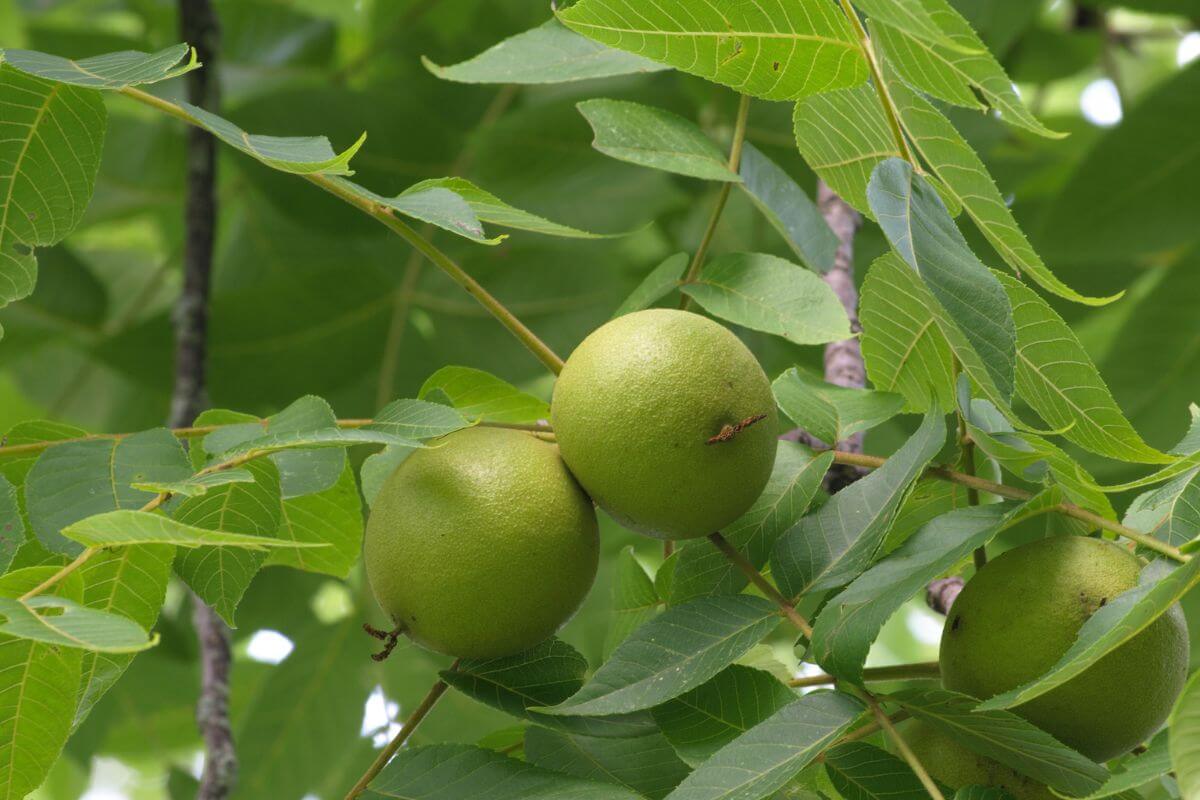
| Location | Nutrients | Interesting Fact |
| Eastern half of the Lower 48 states | Protein, magnesium, phosphorus, copper, and manganese | Black walnut trees provide food, medicine, dye, and useful wood. |
Black walnut trees are common and easy to find. You can often find them in low spots near their parent trees throughout the winter. These tall, deciduous hardwood trees produce round or oblong nuts, making them easy to identify when the nuts are present.
Black walnuts have a sweet and earthy taste. They can be enjoyed raw on desserts like ice cream or cupcakes. You can dip them in sugar syrup for a candy-like treat or grind them into a meal to make flour.
Black walnuts look like green tennis balls when they fall from the tree, but their rough husks turn black in the winter. Wear waterproof gloves when handling wet walnut husks to avoid getting the pulp on your skin, as it can color your skin and cause irritation for some people.
13. Chicory (Cichorium intybus)
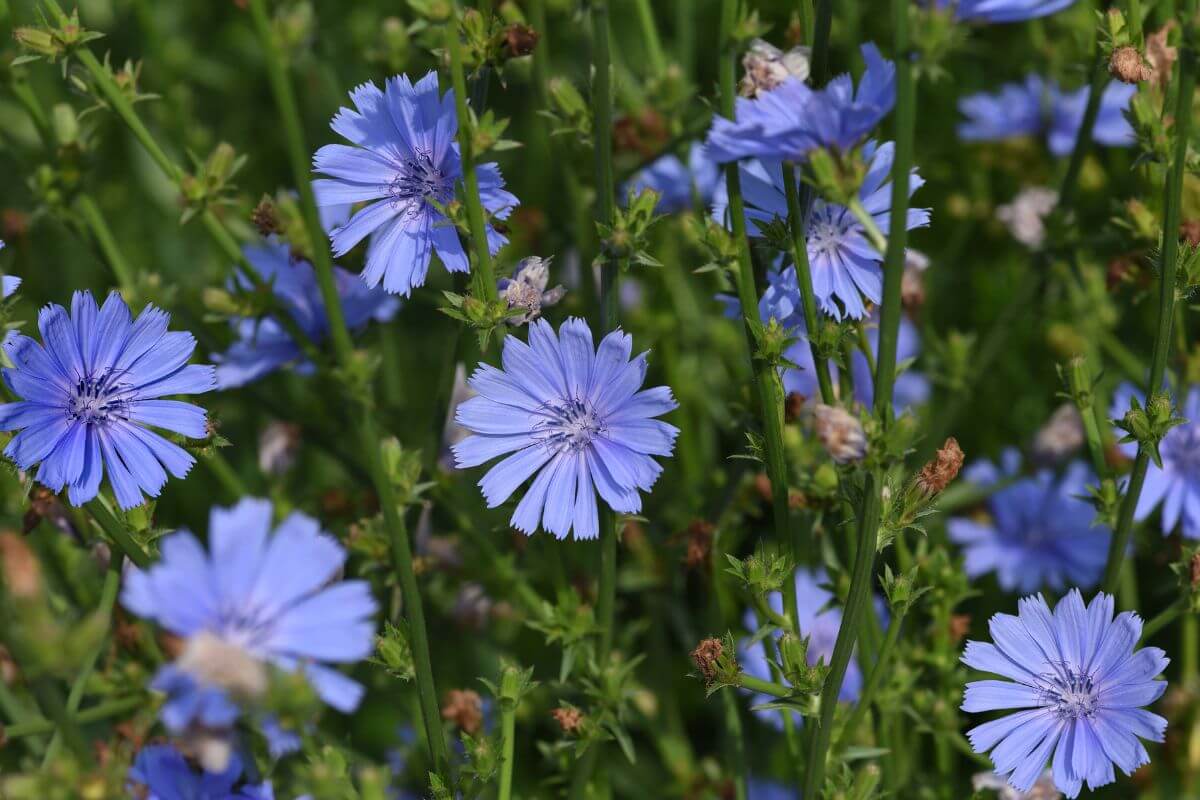
| Location | Nutrients | Interesting Fact |
| United States | Proteins, vitamins, minerals, soluble fiber, carbohydrates | Chicory root has been used as a caffeine-free coffee replacement since colonial times. |
Chicory is a common wild weed. To identify chicory, look for its dried stalks with dried flower sepals along the stalk and branch joints. You can also look for small leaves at the base of the stalk that look like dandelion leaves but are slightly fuzzy (dandelion leaves are smooth).
The small chicory leaves that remain on the plant during winter can be eaten as bitter salad greens. It is also one of the plants that you can eat during fall. Alternatively, the roots can be washed, chopped, and roasted to create a coffee substitute.
14. Crab Apple (Malus species)
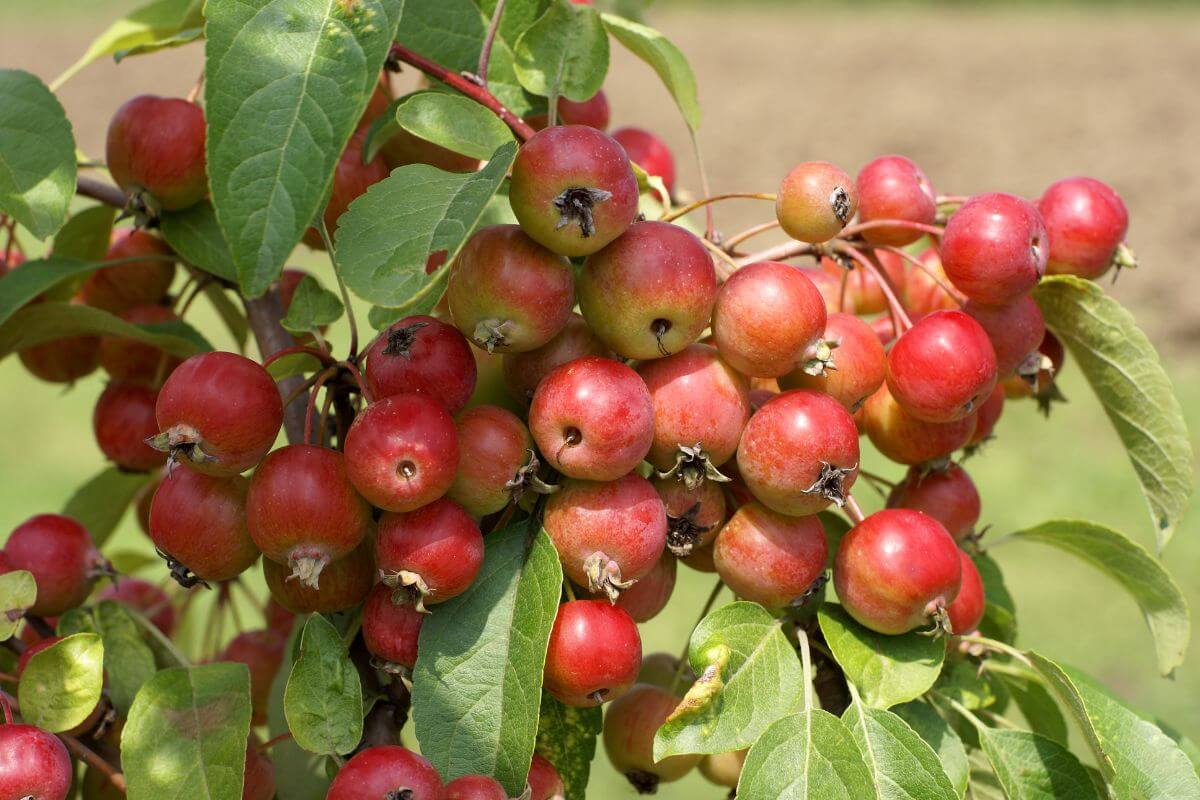
| Location | Nutrients | Interesting Fact |
| Eastern and Central U.S. | Pectin, fiber, vitamin C | For a long time, people have connected crab apples with love and marriage. |
Crab apples are large shrubs or small trees. You can often find crab apples in parks and boulevards, in front of businesses, yards, and other cityscapes. They often grow in fields, hedgerows, and abandoned homesteads in the countryside.
Crab apples usually appear on the tree in summer and ripen in fall, but winter is the best time to pick them. All types of crab apples keep their fruit into winter. Freezing temperatures make the crab apples soft and sweet, so they taste better when it’s cold outside.
You can harvest them when they’re ripe in the fall and put them in your freezer for a few days. But make sure to taste them as you go! Different trees produce fruit with varying flavors, so avoid picking something that tastes bad.
Crab apples are great for making jelly, fruit leather, pie filling, syrup, and other treats.
15. Lemon Balm (Melissa officinalis)
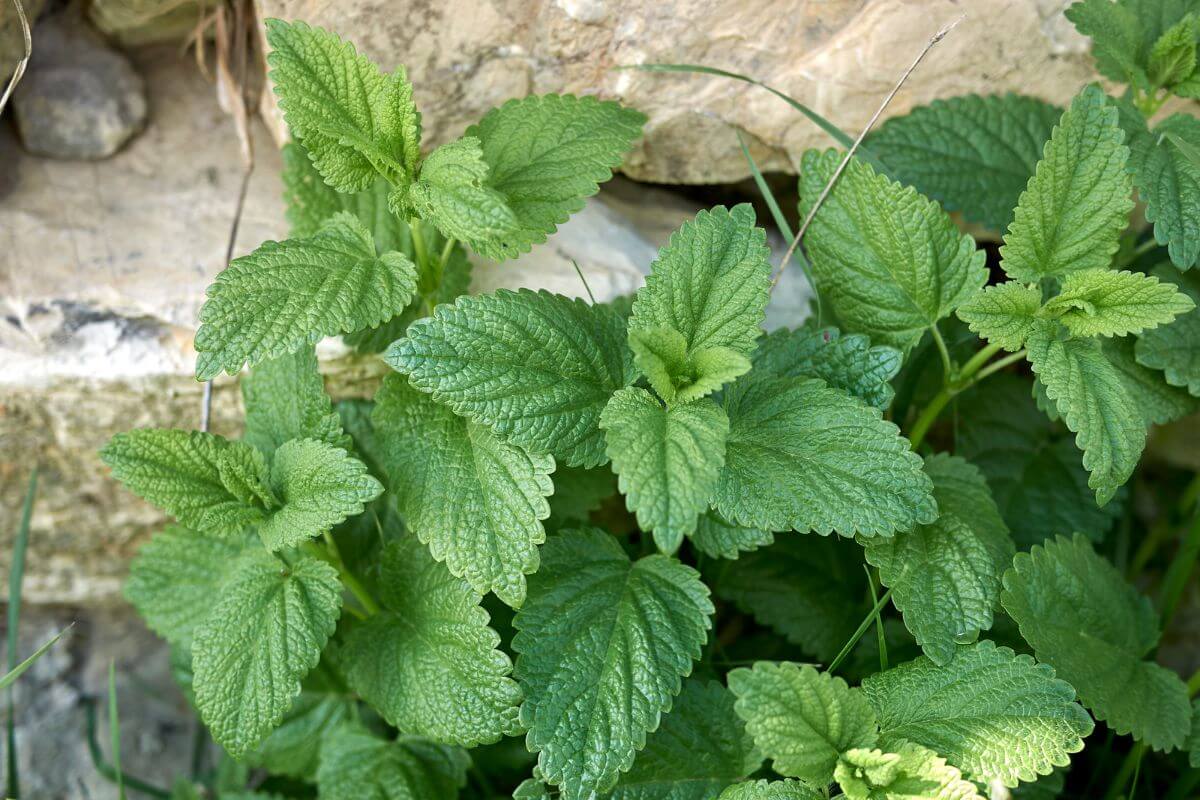
| Location | Nutrients | Interesting Fact |
| Warm or temperate areas around the globe | Thiamin, Vitamin C, antioxidants | Thomas Jefferson brought lemon balm to America because he wanted it in his garden. |
Lemon balm is a perennial plant in the mint family. It is native to mountainous areas in southern Europe and northern Africa. When planted in a flower bed, it can survive cold weather but may need extra protection in very low temperatures.
Grow lemon balm in sunny or semi-sunny spots with well-drained soil. The plants grow quickly and form large clumps. You can also grow lemon balm in a pot, but it thrives that it needs to be regularly repotted and requires a larger container.
The entire lemon balm plant is safe to eat, but the tender leaves are the most desirable. The bright green, crinkled leaves have a pleasant lemon-like smell. Because lemon balm is rich in nectar, it is often cultivated to provide food for bees.
Lemon balm is also a popular herb commonly used in cooking. Its fresh, citrus-flavored leaves can enhance salads, fish dishes, sauces, jams, and beverages. Lemon balm is often enjoyed as a tea or in more concentrated forms, such as tinctures.
Edible Winter Plants Final Thoughts
Edible winter plants are great for foraging or growing for fresh produce during the cold months. From the American barberry, which you can eat raw or use to make jams, to wild onions and garlic, each offers a plethora of culinary uses. These plants enrich your winter culinary experience in the best ways.
Don’t let the winter months limit your ability to eat healthily. Enjoy the flavors and nutritional benefits these plants offer while feeling the satisfaction of harvesting your own food sustainably.
Read more about other plants out in the wild that are edible:

